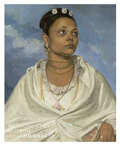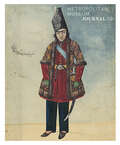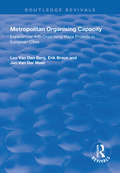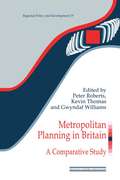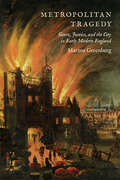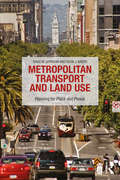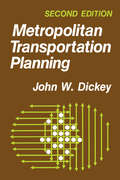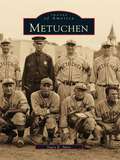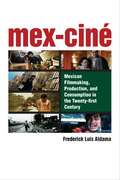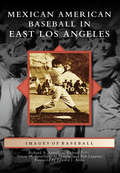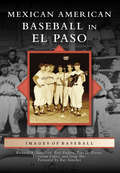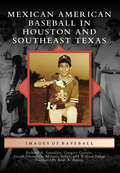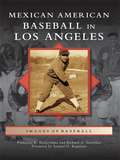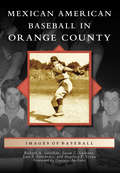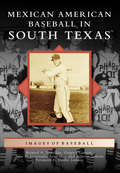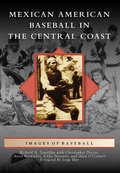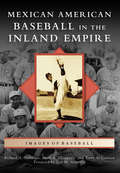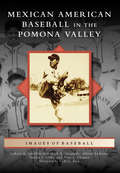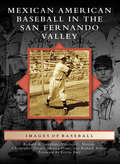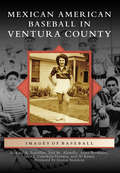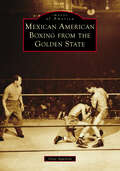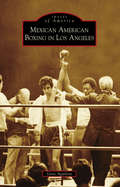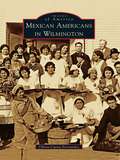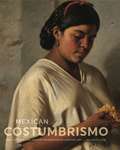- Table View
- List View
Metropolitan Museum Journal, volume 58 number 1 (January 2023)
by Metropolitan Museum JournalThis is volume 58 issue 1 of Metropolitan Museum Journal. Founded in 1968, the Metropolitan Museum Journal is a blind, peer-reviewed scholarly journal published annually that features original research on the history, interpretation, conservation, and scientific examination of works of art in the Museum’s collection. Its scope encompasses the diversity of artistic practice from antiquity to the present day. The Journal encourages contributions offering critical and innovative approaches that will further our understanding of works of art.
Metropolitan Museum Journal, volume 59 number 1 (January 2024)
by Metropolitan Museum JournalThis is volume 59 issue 1 of Metropolitan Museum Journal. Founded in 1968, the Metropolitan Museum Journal is a blind, peer-reviewed scholarly journal published annually that features original research on the history, interpretation, conservation, and scientific examination of works of art in the Museum’s collection. Its scope encompasses the diversity of artistic practice from antiquity to the present day. The Journal encourages contributions offering critical and innovative approaches that will further our understanding of works of art.
Metropolitan Organising Capacity: Experiences with Organising Major Projects in European Cities (Routledge Revivals)
by Leo van Berg Erik Braun Jan van MeerPublished in 1997. The environment of cities has become increasingly competitive. Tradition location factors, that once tied economic activities firmly to particular areas have become less important. Increasingly the ability of a city to anticipate, respond to and cope with internal and external changes is getting attention. Organizing capacity of cities, or of metropolitan regions is becoming indispensible for sustainable economic and social development. The authors have carried out investigations into eight European cities to increase the insight into the practice of organizing capacity. The analysis of the development and implementation of 15 revitalization projects in these cities shows that organizing capacity calls for a new style of entrepreneurial urban management with public and private networking, leadership, long term strategies and organizing political and public support as key concepts.
Metropolitan Planning in Britain: A Comparative Study (Regions and Cities #19)
by Peter Roberts Kevin Thomas Gwyndaf WilliamsMetropolitan Planning in Britain is the first comparative analysis and assessment of metropolitan areas and their strategic planning for almost two decades. Changes in population distribution, styles of local government, business practices, and attitudes to the environment have all had an impact on cities in recent years which planners and other policy makers must take into consideration. Based on a series of research projects and the activities of a study group supported by the Regional Studies Association, the book examines in detail nine major urban areas, their specific characters and requirements, and how metropolitan planning is adapting to fulfil those requirements. It also discuses the possible future evolution of metropolitan planning, especially in the light of new regional arrangements and devolution.
Metropolitan Tragedy
by Marissa GreenbergBreaking new ground in the study of tragedy, early modern theatre, and literary London, Metropolitan Tragedy demonstrates that early modern tragedy emerged from the juncture of radical changes in London's urban fabric and the city's judicial procedures. Marissa Greenberg argues that plays by Shakespeare, Milton, Massinger, and others rework classical conventions to represent the city as a locus of suffering and loss while they reflect on actual sources of injustice in sixteenth- and seventeenth-century London: structural upheaval, imperial ambition, and political tyranny.Drawing on a rich archive of printed and manuscript sources, including numerous images of England's capital, Greenberg reveals the competing ideas about the metropolis that mediated responses to theatrical tragedy. The first study of early modern tragedy as an urban genre, Metropolitan Tragedy advances our understanding of the intersections between genre and history.
Metropolitan Transport and Land Use: Planning for Place and Plexus
by David M Levinson Kevin J KrizekAs cities around the globe respond to rapid technological changes and political pressures, coordinated transport and land use planning is an often targeted aim. Metropolitan Transport and Land Use, the second edition of Planning for Place and Plexus, provides unique and updated perspectives on metropolitan transport networks and land use planning, challenging current planning strategies, offering frameworks to understand and evaluate policy, and suggesting alternative solutions. The book includes current and cutting-edge theory, findings, and recommendations which are cleverly illustrated throughout using international examples. This revised work continues to serve as a valuable resource for students, researchers, practitioners, and policy advisors working across transport, land use, and planning.
Metropolitan Transportation Planning (2nd Edition)
by John W. DickeyMetropolitan Transportation Planning (2nd Edition) by John W. Dickey.
Metuchen
by Stacy E. SpiesLocated in central New Jersey's Middlesex County,Metuchen was historically known for the stellarcollection of literary, artistic, and industrial talent who resided here, and earned the nickname the "Brainy Boro." Since its beginnings as a village within Raritan township, Metuchen has matured from its roots as a commercial center for area farmers into a desirable suburban community. Metuchen compiles photographs from the rich collections of the Metuchen-Edison Historical Society, including some of the hundreds of photographs taken in the early years of the twentieth century by resident J. Lloyd Grimstead. The pages of Metuchen invite you to shop the businesses along Main Street, wait for the morning train with the commuters, and tour the gracious homes along Graham and Lake Avenues. In sharp, illustrative detail, you can visit historicBorough Hall and the library, and meet or reacquaintyourself with some of the people who made Metuchentheir home.
Mex-Ciné: Mexican Filmmaking, Production, and Consumption in the Twenty-first Century
by Aldama Frederick LuisMex-Ciné offers an accessibly written, multidisciplinary investigation of contemporary Mexican cinema that combines industrial, technical, and sociopolitical analysis with analyses of modes of reception through cognitive theory. Mex-Ciné aims to make visible the twenty-first century Mexican film industry, its blueprints, and the cognitive and emotive faculties involved in making and consuming its corpus. A sustained, free-flowing book-length meditation, Mex-Ciné enriches our understanding of the way contemporary Mexican directors use specific technical devices, structures, and characterizations in making films in ways that guide the perceptual, emotive, and cognitive faculties of their ideal audiences, while providing the historical contexts in which these films are made and consumed.
Mexican American Baseball in East Los Angeles (Images of Baseball)
by Richard A. Santillán Al Padilla Bob Lagunas Richard Peña Teresa M. SantillánMexican American Baseball in East Los Angeles highlights the unforgettable teams, players, and coaches who graced the hallowed fields of East Los Angeles between 1917 and 2016 and brought immense joy and honor to their neighborhoods. Off the field, these players and their families helped create the multibillion-dollar wealth that depended on their backbreaking labor. More than a game, baseball and softball were political instruments designed to promote and empower civil, political, cultural, and gender rights, confronting head-on the reactionary forces of prejudice, intolerance, sexism, and xenophobia. A century later, baseball and softball are more popular than ever in East Los Angeles. Dedicated coaches still produce gifted players and future community leaders. These breathtaking photographs and heartfelt stories shed unparalleled light to the long and rich history of baseball and softball in the largest Mexican American community in the United States.
Mexican American Baseball in El Paso (Images of Baseball)
by Richard A. Santillan Donavan Lopez Eric Enders Pete G. FloresMexican American Baseball in El Paso chronicles the vibrant and colorful history of baseball in the El Paso–Juárez border region. For more than a century, baseball along the border has served as a means of bringing together people of all backgrounds, races, and nationalities, from the fly-by-night teams of the Pancho Villa era to the fabled semiprofessional clubs of the Lower Valley League. For the area’s Mexican and Mexican American citizens, storied teams like the Juárez Indios, Fabens Merchants, 1949 Bowie Bears, and El Paso Diablos served as both community rallying points and signposts of cultural identity. From the legendary semiprofessional players of decades past to the most recent major leaguers, this book presents the photographic history of baseball in America’s largest border community.
Mexican American Baseball in Houston and Southeast Texas (Images of Baseball)
by Richard A. Santillán Gregory Garrett Ramos Joseph Thompson Mikaela Selley William LangeMexican American Baseball in Houston and Southeast Texas pays tribute to the baseball and softball players and teams from Houston, Sugar Land, Texas City, Richmond, and other surrounding communities in the region. Since the early 1900s, this game has had an important role in the lives of area Mexican Americans. In the Houston barrios, when entrenched discriminatory practices obstructed city unity, the diamond brought people together. In the Sugar Land region, Mexican Americans, African Americans, and Anglos worked and played together, blurring racial lines. Baseball and softball built community pride and connected generations of Mexican American families. The wonderful stories and breathtaking images in this book help resurrect the rich and little-known history of Mexican American baseball and softball in this key part of Texas.
Mexican American Baseball in Los Angeles (Images of Baseball)
by Francisco E. Balderrama Samuel O. Regalado Richard A. SantillanImages of Baseball: Mexican American Baseball in Los Angeles celebrates the flourishing culture of the great pastime in East Los Angeles and other communities where a strong sense of Mexican identity and pride was fostered in a sporting atmosphere of both fierce athleticism and social celebration. From 1900, with the establishment of the Mexican immigrant community, to the rise of Fernandomania in the 1980s, baseball diamonds in greater Los Angeles were both proving grounds for youth as they entered their educations and careers, and the foundation for the talented Forty-Sixty Club, comprised of players of at least 40, and often over 60, years of age. These evocative photographs look back on the great Mexican American teams and players of the 20th century, including the famous Chorizeros--the proclaimed "Yankees of East L.A."
Mexican American Baseball in Orange County (Images of Baseball)
by Gustavo Arellano Richard A. Santillan Angelina F. Veyna Luis F. Fernandez Susan C. LuévanoImages of Baseball: Mexican American Baseball in Orange County celebrates the once-vibrant culture of baseball and softball teams from Placentia, Anaheim, Santa Ana, Westminster, San Juan Capistrano, and nearby towns. Baseball allowed men and women to showcase their athletic and leadership skills, engaged family members, and enabled community members to develop social and political networks. Players from the barrios and colonias of La Fábrica, Campo Colorado, La Jolla, Logan, Cypress Street, El Modena, and La Colonia Independencia, among others, affirmed their Mexican and American identities through their sport. Such legendary teams as the Placentia Merchants, the Juveniles of La Habra, the Lionettes de Orange, the Toreros of Westminster, and the Road Kings of Colonia 17th made weekends memorable. Players and their families helped create the economic backbone and wealth evident in Orange County today. This book sheds light on powerful images and stories of the Mexican American community.
Mexican American Baseball in South Texas (Images of Baseball)
by Richard A. Santillán Gregory Garrett Jorge Iber Juan D. Coronado Roberto ZamoraMexican American Baseball in South Texas pays tribute to the former baseball teams and players from Edinburg, McAllen, Mission, Pharr, Donna, Alamo, San Juan, Brownsville, Harlingen, and other surrounding communities. From the late 19th century through the 1950s, baseball in South Texas provided opportunities for nurturing athletic and educational skills, reaffirming ethnic identity, promoting political self-determination, developing economic autonomy, and reshaping gender roles for women. Games were special times where Mexican Americans found refuge from backbreaking work and prejudice. These unmatched photographs and stories shed light on the rich history of baseball in this region of Texas.
Mexican American Baseball in the Central Coast (Images of Baseball)
by Alan O'Connor Christopher Docter Anna Bermúdez Richard A. Santillán Eddie NavarroMexican American Baseball in the Central Coast pays tribute to the teams and players who brought joy and honor to their fans and communities in Ventura and Santa Barbara Counties. Baseball was played before enthusiastic crowds in Piru, Santa Paula, Fillmore, Ventura, Oxnard, Camarillo, Ojai, Carpinteria, Santa Barbara, Goleta, Santa Maria, Guadalupe, Lompoc, and other communities. Players and their families helped create the economic infrastructure and prosperity that are evident today in the Central Coast. For women, softball was a social counterbalance to the strict cultural roles defined by society. Many former players dedicated their lives to the unrelenting struggle for social justice, while others devoted themselves to youth sports. This book remedies the glaring omission of baseball images and stories of Mexican American neighborhoods in the Central Coast of California.
Mexican American Baseball in the Inland Empire (Images of Baseball)
by Richard A. Santillan Mark A. Ocegueda José M. Alamillo Terry A. CannonMexican American Baseball in the Inland Empire celebrates the thriving culture of former teams from Pomona, Ontario, Cucamonga, Chino, Claremont, San Bernardino, Colton, Riverside, Corona, Beaumont, and the Coachella Valley. From the early 20th century through the 1950s, baseball diamonds in the Inland Empire provided unique opportunities for nurturing athletic and educational skills, ethnic identity, and political self-determination for Mexican Americans during an era of segregation. Legendary men's and women's teams--such as the Corona Athletics, San Bernardino's Mitla Café, the Colton Mercuries, and Las Debs de Corona--served as an important means for Mexican American communities to examine civil and educational rights and offer valuable insight on social, cultural, and gender roles. These evocative photographs recall the often-neglected history of Mexican American barrio baseball clubs of the Inland Empire.
Mexican American Baseball in the Pomona Valley (Images of Baseball)
by Richard A. Santillan Mark A. Ocegueda Sandra L. Uribe Alfonso Ledesma Alejo L. VasquezThis volume pays homage to the wonderful teams and players from Azusa, La Verne, Claremont, Pomona, Chino, Cucamonga, Ontario, and Upland. A common thread of all these diverse communities was the establishment of baseball teams and, later, softball teams. Baseball played a critical role in advancing civil and political rights, labor reform, gender equality, educational integration, and cultural legitimacy. These remarkable photographs revive the often-overlooked history of Mexican American baseball in the Greater Pomona Valley.
Mexican American Baseball in the San Fernando Valley (Images of Baseball)
by Richard A. Santillan Christopher Docter Monica Ortez Richard Arroyo Victoria C. NortonMexican American Baseball in the San Fernando Valley explores the teams and players that dotted the valley landscape throughout the 20th century. In a time and place where Mexican Americans were closed off from many city recreation centers, neighborhoods formed their own teams. Baseball and softball reinforced community and regional ties, strengthened family bonds, instilled discipline and dedication that translated into future professional careers, provided women opportunities outside their traditional roles in the home, and fostered lifelong friendships. These photographs serve as a lens to both local sports history and Mexican American history.
Mexican American Baseball in Ventura County (Images of Baseball)
by Anna Bermúdez Richard A. Santillán José M. Alamillo Al Ramos Juan J. Canchola-VenturaMexican American Baseball in Ventura County pays tribute to the legendary teams and players from Ventura, Oxnard, Camarillo, Simi Valley, Moorpark, Santa Paula, and other surrounding neighborhoods. From the early 20th century through the 1950s, baseball in Ventura County safeguarded opportunities for nurturing athletic and educational skills, asserting ethnic identity, promoting political self-confidence, developing economic autonomy, and redefining gender roles for women. Outside the ball field, these players and their families helped create the multibillion-dollar agricultural wealth that relied heavily on their backbreaking labor. These extraordinary photographs and remarkable stories shed unparalleled light on the long and rich history of baseball and softball in this celebrated region of California.
Mexican American Boxing from the Golden State (Images of America)
by Gene AguileraThe Mexican American boxer is one who leaves it all in the ring. They have been described as devastating punchers, fearless fighters, and tough competitors by boxing fans, sportswriters, and commentators alike. Mexican American boxers have long carried a reputation in boxing circles as being the ultimate crowd-pleasers. In continuing that tradition, the dramatic testimonies of seven distinct, valiant, and dashing warriors from the Golden State of California are presented here in intricate detail: Aurelio Herrera, Art Aragon, Mando Ramos, Bobby Chacon, "Yaqui" Lopez, Arturo Frias, and Oscar Muniz. By exposing new generations to their action-packed stories, new life is breathed into these talented and gifted boxers, ensuring their fighting spirit and heartfelt memories will never die. This volume salutes these pioneers of Mexican American boxing for opening the doors for today's boxers.
Mexican American Boxing from the Golden State (Images of America)
by Gene AguileraThe Mexican American boxer is one who leaves it all in the ring. They have been described as devastating punchers, fearless fighters, and tough competitors by boxing fans, sportswriters, and commentators alike. Mexican American boxers have long carried a reputation in boxing circles as being the ultimate crowd-pleasers. In continuing that tradition, the dramatic testimonies of seven distinct, valiant, and dashing warriors from the Golden State of California are presented here in intricate detail: Aurelio Herrera, Art Aragon, Mando Ramos, Bobby Chacon, "Yaqui" Lopez, Arturo Frias, and Oscar Muniz. By exposing new generations to their action-packed stories, new life is breathed into these talented and gifted boxers, ensuring their fighting spirit and heartfelt memories will never die. This volume salutes these pioneers of Mexican American boxing for opening the doors for today's boxers.
Mexican American Boxing in Los Angeles (Images of America)
by Gene AguileraWelcome to the colorful, flamboyant, and wonderful world of Mexican American boxing in Los Angeles. From the minute they stepped into the ring, Mexican American fighters have electrified fans with their explosiveness and courage. These historical images bring to life a sociological culture consisting of knockouts, the Main Street Gym, the Olympic Auditorium, neighborhood rivalries, Mexican idols, posters, and promoters. Like a winding thread, "the Golden Boy" Art Aragon bobs and weaves throughout the book. From "Mexican" Joe Rivers to Oscar De La Hoya, the true stories of their sensational ring wars are told while keeping alive the spirit and legacy of Mexican American boxing from the greater Los Angeles area.
Mexican Americans in Wilmington (Images of America)
by Olivia Cueva-FernandezUnder Spanish, Mexican, and American flags, the Los Angeles harbor area has developed many industries and businesses that survived on Mexican labor, supporting families of Mexican origin for more than a century. Pioneering Mexican Americans have worked the railroads, fields, canneries, plants, refineries, waterfront, and family-owned businesses for generations, forming strong bonds and lifelong friendships. Active in the military and sports, as well as involved in the church and community, Mexican Americans have overcome poverty, hardships, and discrimination, retained cultural values and customs, intermarried and assimilated with other cultures, and become the largest ethnic group in Wilmington. Many of the early families still have relatives that live and work in Wilmington, with sons and daughters achieving successful careers in various realms. Through education, hard work, and determination, Wilmington's Mexican Americans have contributed extensively to the harbor's vibrant American way of life.
Mexican Costumbrismo: Race, Society, and Identity in Nineteenth-Century Art
by Mey-Yen MoriuchiThe years following Mexican independence in 1821 were critical to the development of social, racial, and national identities. The visual arts played a decisive role in this process of self-definition. Mexican Costumbrismo reorients current understanding of this key period in the history of Mexican art by focusing on a distinctive genre of painting that emerged between 1821 and 1890: costumbrismo.In contrast to the neoclassical work favored by the Mexican academy, costumbrista artists portrayed the quotidian lives of the lower to middle classes, their clothes, food, dwellings, and occupations. Based on observations of similitude and difference, costumbrista imagery constructed stereotypes of behavioral and biological traits associated with distinct racial and social classes. In doing so, Mey-Yen Moriuchi argues, these works engaged with notions of universality and difference, contributed to the documentation and reification of social and racial types, and transformed the way Mexicans saw themselves, as well as how other nations saw them, during a time of rapid change for all aspects of national identity.Carefully researched and featuring more than thirty full-color exemplary reproductions of period work, Moriuchi’s study is a provocative art-historical examination of costumbrismo’s lasting impact on Mexican identity and history.E-book editions have been made possible through support of the Art History Publication Initiative (AHPI), a collaborative grant from the Andrew W. Mellon Foundation.
